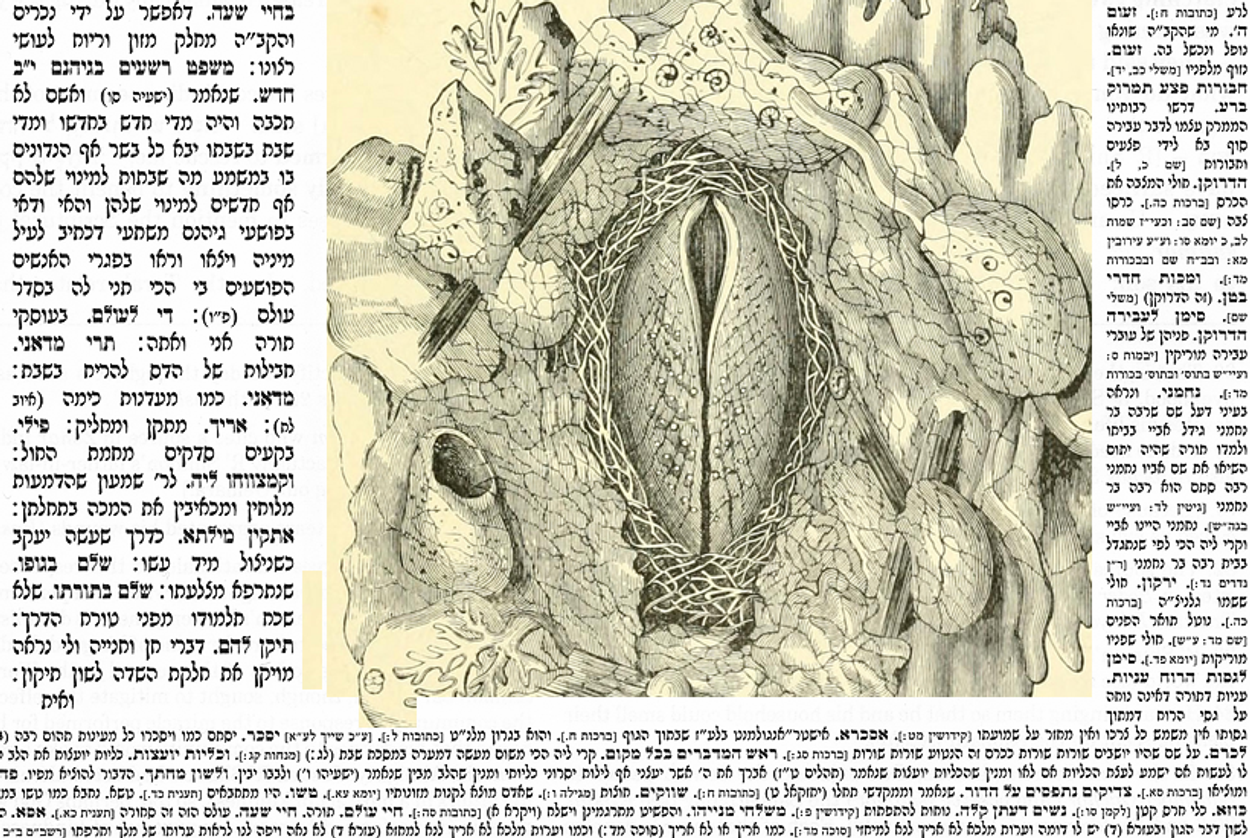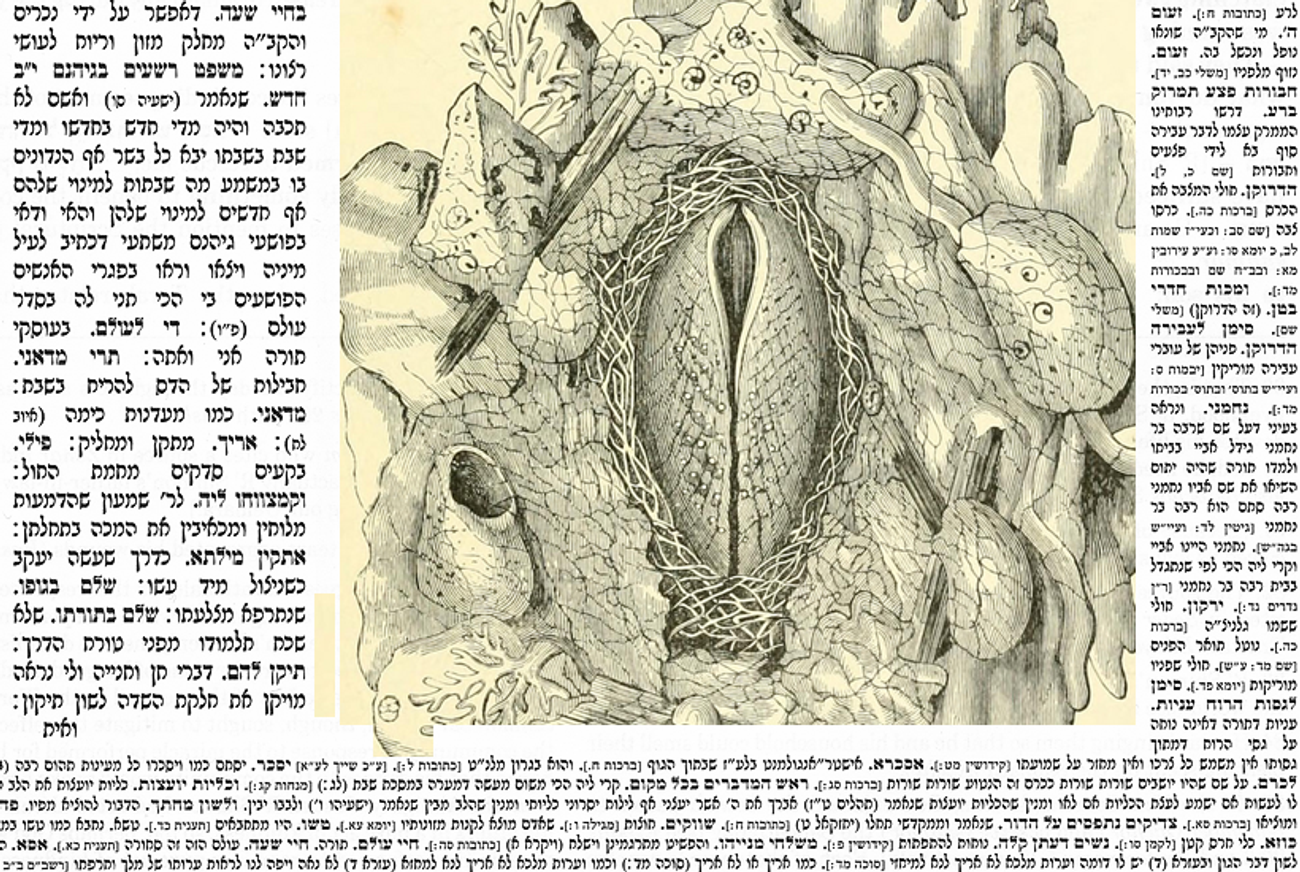Does a Penis Make the Man? Hermaphrodites, Eunuchs, and Jews With Genital Deformities
Jewish law loves to separate people into airtight categories. Real-life sex and gender are more complicated. What then?




Literary critic Adam Kirsch is reading a page of Talmud a day, along with Jews around the world.
The initial subject of Tractate Yevamot was levirate marriage, the obligation of a Jewish man to marry his deceased brother’s widow. But by chapter 8, which Daf Yomi readers have been exploring for the last two weeks, Yevamot has turned into a much wider-ranging exploration of marriage and sexuality. And it is fascinating to see how the rabbis navigate the questions that are still very much at the heart of our own sexual debates: questions about gender, consent, violation, and procreation. The rabbis bring to these subjects the same passion for clear definition that, by now, I recognize as one of the hallmarks of Talmudic thought. Because the rabbis want to be certain about what the law requires and forbids, they are especially drawn to limit cases, hypothetical situations in which our ordinary definitions and distinctions break down. In tractate Shabbat, for instance, they spent many pages determining exactly what constitutes work and movement. In Yevamot, by the same token, they try to decide exactly what constitutes a sex act and a marriage.
And in this week’s reading, the Talmud turned to gender boundaries, asking what exactly makes a man a man. Today, we might answer this question in a variety of ways, from the genetic—a male is someone who possesses a Y chromosome—to the cultural and social—a man is someone who is educated to perform that role. For the rabbis, the answer is more straightforward: A man is someone who possesses a penis. But this is not as clear a matter as one might assume. What if you are born with a penis, but it gets cut off or punctured? What if your sexual organs are invisible and indeterminate, as in the case of what the Talmud calls a tumtum? Or what about those rare individuals who are hermaphrodites, having both a penis and a vagina? These rare cases are of interest to the rabbis not because they would have come up regularly, but because they complicate the tendency of Jewish law to separate people and things into airtight categories.
This concern goes back to the Bible. Much of the law discussed in this week’s reading is based on chapter 23 of Deuteronomy, which lists several categories of people who are forbidden from “entering the congregation of the Lord.” This includes the descendants of certain nations, who are cursed for the part they played in hindering the Israelites during the Exodus, such as the Ammonites and the Moabites. Ammonites and Moabites are forbidden from converting to Judaism, and their descendants can never marry Jews. However, the rabbis immediately point out a problem with this biblical law. Doesn’t the Bible itself tell us that no less a person than King David was the descendant of a Moabite, Ruth from the Book of Ruth?
Indeed, in the Gemara in Yevamot 76b, the rabbis imagine a dialogue between King Saul, David’s rival, and his adviser Doeg the Edomite, in which Doeg tells Saul not to worry about the upstart David: “Before you inquire as to whether or not he is fit for kingship, inquire as to whether or not he is even fit to enter the congregation.” If David is part Moabite, then how can he ever enter the congregation of the Lord, much less lead it? I’ve always been fascinated by those sections of the Talmud where the rabbis re-imagine the biblical kings of Israel—for the most part, hardened warriors and politicians, accustomed to all kinds of slaughter and Machiavellian scheming—as dedicated students of the Law, as if they were rabbis themselves.
So it is here: The Gemara invents a halakhic discussion between Doeg and Abner, Saul’s chief general, in which they establish by parsing Deuteronomy that the prohibition on Moabite conversion applies only to men, not to women. After all, Abner explains, the reason for the biblical prohibition on marrying Ammonites is made explicit in Deuteronomy: It is “Because they did not meet you with bread and water on the way, when you came forth out of Egypt.” But surely it would not have been incumbent on the Ammonite and Moabite women to perform this act of hospitality, since women were expected to stay at home, not chase after strangers with gifts. It is only the men of these nations who committed the wrong, so it is only the men who cannot convert to Judaism; the women are permitted. In this way, Ruth’s conversion is made good, and David’s lineage is freed from taint.
In Deuteronomy 23, the verse that excludes the Ammonites and Moabites is preceded by one that excludes men with genital deformities or injuries: “He that is crushed or maimed in his private parts shall not enter into the congregation of the Lord.” But what exactly, the rabbis ask in Yevamot 75a, constitutes maiming? “Who is deemed a man with crushed testicles?” The answer is comprehensive: anyone who has suffered any wound to the testicles, even just one of them, or anyone whose testicles have been punctured or “decayed,” or are “deficient” for any reason. But crucially, this deficiency has to be the result of an injury; a man who is born with one testicle is “a eunuch by natural causes, and he is fit.”
A biblical scholar might say that the purpose of the law was to stop Israelites from castrating men to become eunuchs, as was common practice in other Near Eastern royal courts. After all, many biblical laws seem designed expressly to separate the Israelites from their neighbors; according to Maimonides, this was the original purpose of many of the statutes that today seem pointless, such as the prohibition on mixing wool and linen. The rabbis, however, seem to operate on the assumption that men with testicular injuries are forbidden from getting married because they are infertile, and so can’t fulfill the commandment, much discussed in Yevamot, to “be fruitful and multiply.”
But if so, what happens in the case of a man who has a genital injury but remains fertile? At this point, the Talmud’s frankness and explicitness, even about delicate subjects, becomes rather hair-raising, as the rabbis describe several types of genital injury in graphic detail. “A certain man was climbing up a palm tree,” we read, “and a thorn punctured him in the testicles, and semen resembling a thread of pus issued from him, and yet he later had children.” This seems like evidence that testicular injury does not always lead to sterility. But Rav was not convinced: “Go inquire about his children where they come from,” he said, implying that the injured man could not have been their actual father.
How much of a man’s penis or testicles has to be missing before he is considered maimed? The rule is that if even a hairsbreadth of the crown of the penis remains, the man is fit. Ravina asks if this sliver of the crown must surround the entire penis or just part of it, and Rava Tosfa’a answers that a majority is sufficient. Rav Huna describes the difference between the penis being cut “like a quill” and “like a gutter”: fortunately, perhaps, I can’t envision exactly what this means, but it seems to be the difference between being cut all around and having an incision made on the top of the shaft. This leads to a discussion of how much penis is required for sexual intercourse and what sorts of injury interfere with sperm production: “A certain incident occurred in Pumbedita, where the seminal duct of a certain man became blocked, and he emitted semen through the urinary duct.”
And what if a man’s penis is punctured and then it heals: How do you know whether it is safe for him to have intercourse, or whether the flow of semen might reopen the wound? To figure it out, the rabbis explain, you must stimulate an orgasm by bringing “warm bread and placing it upon his anus.” In this way, apparently, you avoid the ban on masturbation, in keeping with the usual legal principle that an action performed in an unusual way doesn’t count. Alternatively, you could use Abaye’s technique and “pass before him the colorful garments of a woman,” which would be so exciting they would lead to orgasm. Rava, however, doubts that mere clothing can be so stimulating: “Is that to say that everyone is like Barzilai the Gileadite?” he asks. Barzilai is a minor biblical figure who is remembered in Talmudic lore as being exceptionally licentious.
All of this discussion is predicated on the idea that a sex act requires an intact penis. But, Rav Huna asks in Yevamot 76a, what about lesbian sex—or, to use the Talmud’s description, “women who rub against each other”? Such conduct is frowned on by Jewish law, but it is not explicitly prohibited: Rather, the Koren Talmud’s notes explain, it falls under the category of “following the conduct of Egypt,” which in the Jewish imagination was a country of perverse sexual and religious practices. “Rubbing” is not, however, sex in the biblical sense, since it doesn’t involve being penetrated by a penis; nor is it the sin of onanism, since it doesn’t involve spilling seed. The result is that a woman who has sex with another woman is not considered a zona, and she is still permitted to marry a priest. In this way, the rabbis’ phallocentrism turned out to be good for Jewish lesbians—an ironic twist in the Talmud’s complicated treatment of sexuality.
***
To read Tablet’s complete archive of two years of Daf Yomi Talmud study, click here.
Adam Kirsch is a poet and literary critic, whose books include The People and the Books: 18 Classics of Jewish Literature.
Adam Kirsch is a poet and literary critic, whose books include The People and the Books: 18 Classics of Jewish Literature.